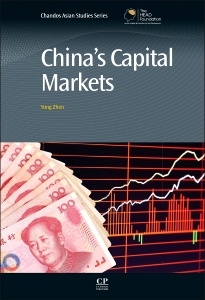Description
China’s Capital Markets
Chandos Asian Studies Series
Author: Zhen Yong
Language: English
Subject for China’s Capital Markets:
Publication date: 10-2018
298 p. · 15.5x23.2 cm · Paperback
Publication Abandoned
Publication date: 12-2013
298 p. · 15.5x23.2 cm · Hardback
Out of Print
Description
/li>Contents
/li>Biography
/li>Comment
/li>
List of figures and tables
List of abbreviations
Acknowledgements
About the author
Introduction
Chapter 1: China’s stock market
Abstract:
Introduction
China’s A-share market
China’s B-share market
Small and Medium-sized Enterprise Board Market
The Growth Enterprise Market
The Third Board Markets
China’s International Board
Discussing the problems that China’s stock market is facing
Summary
Chapter 2: China’s bond market
Abstract:
Introduction
Major types of bonds in China’s bond market
Bond trading
Bond issuance and supervision
A problem in China’s interbank bond trading: “Class C account and “Substitute holding
Opening up of China’s bond markets
Problems and challenges of China’s bond markets
Summary
Chapter 3: China’s derivatives markets
Abstract:
Introduction
China’s futures market
T-bond derivatives market
China’s warrant market
Interest rate (IR) derivatives market
Foreign exchange derivatives market
Credit Default Swap (CDS) market
Local derivatives markets
China’s supervision of financial derivatives markets
The problems of developing China’s derivatives markets
Summary
Chapter 4: China’s private equity market
Abstract:
Recent development of China’s PE market
Main players in China’s PE industry
PE management
PE performance
RMB-denominated PE funds
China Sovereign Wealth Fund
Taxation issue in China’s PE industry
Policies to manage the PE industry
How to make a successful PE in China?
Challenges in developing PE in China
The future of private equity in China
Summary
Chapter 5: Investors in China’s capital markets
Abstract:
Introduction
Chinese funds
Securities companies
Qualified Foreign Institutional Investors (QFIIs)
Qualified Domestic Institutional Investors (QDIIs)
Insurance companies
Pension funds
China enterprise annuity fund
Summary
Chapter 6: China’s banking industry
Abstract:
Introduction
China’s traditional banking
China’s shadow banking
China’s private banking
China’s banking and local governments’ debts
Summary
Chapter 7: Mergers and acquisitions (M&A) in China’s capital markets
Abstract:
Introduction
M&A in China’s capital markets
China’s outbound M&A
Foreign investors’ M&A in China
China’s legal system on M&A
Challenges and problems of M&A in China’s capital markets
Summary
Chapter 8: Valuation adjustment mechanism in China’s capital markets
Abstract:
What is valuation adjustment mechanism (VAM)?
VAM in China
Is a VAM clause legal in China?
Summary
Chapter 9: Opening up of China’s capital markets
Abstract:
Introduction
Chinese firms’ overseas IPOs
QFII
QDII
RQFII
Joint venture securities in mainland China
Internationalization of Chinese securities
Summary
References
Index
- Provides an overall picture of China's capital markets including: policy analysis; case studies; investor strategies and behaviours; and suggestions for success in the markets
- Offers diverse perspectives, using rich data and analysis
- This is the first book to systematically study China’s capital markets




